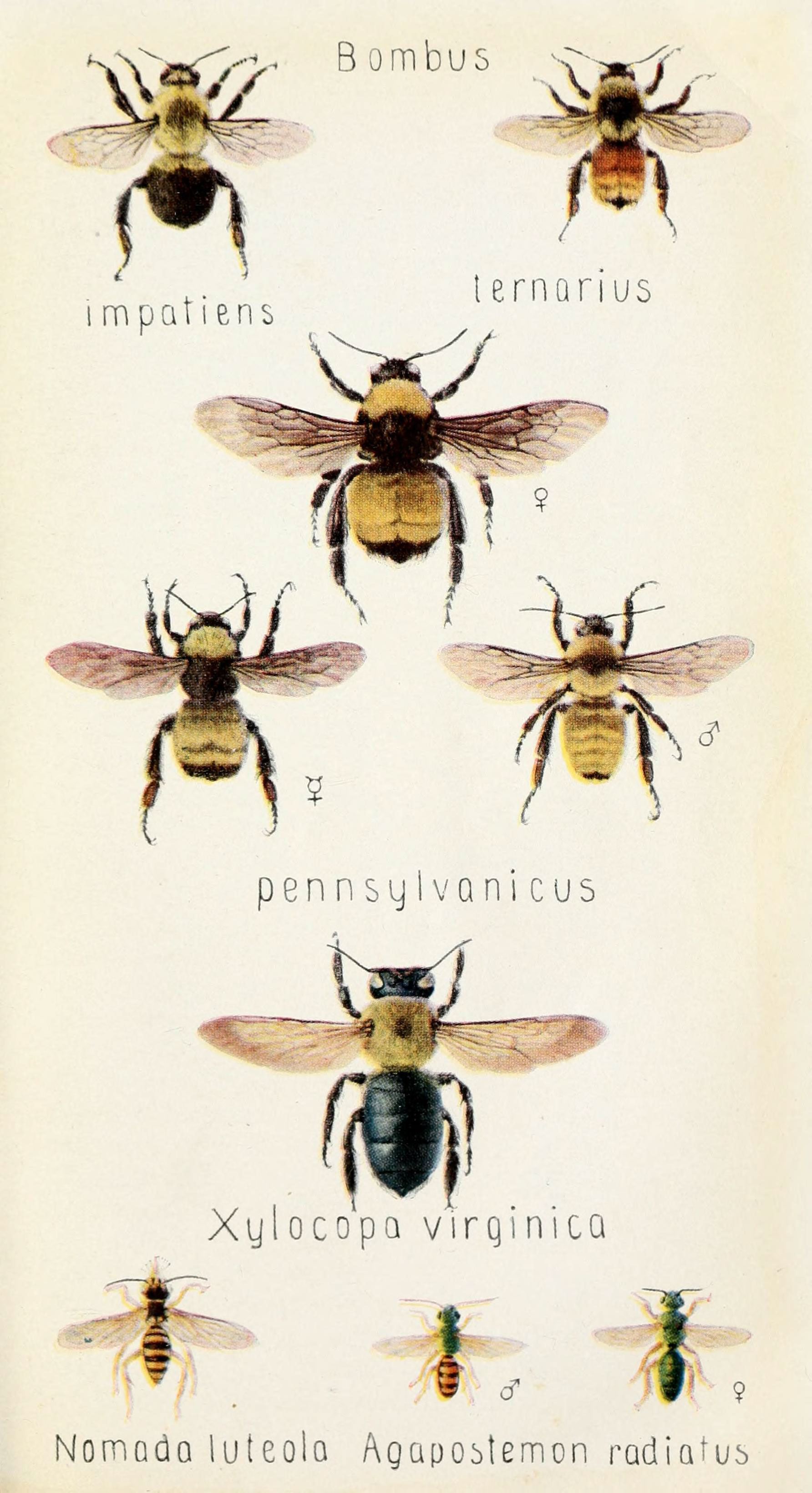Form and Function
The physiological components of the species
Bombus are marked by an open circulatory system, chitinous
exoskeleton, antennae, wings, three pairs of legs extending from the
thorax, and two compound eyes along with three ocelli (primitive eyes).
Bumblebees are also ‘hairy’ or covered in pubescence, giving them
their unique and widely recognizable appearance.
The American Honeybee is generally characterized by an upper banded yellow portion of the thorax with the remainder black and a largely yellow abdomen .
The queen bee is the larger within the species,
with an average 21-25 mm length and 9-11 mm width of the abdomen.
The pubescence of the queen bee covers the thorax, abdomen, and
legs; and is markedly thick and numerous. The
queen bee’s legs are black, along with black or intermixed black and
yellow pubescence. The head is also largely black with noted small
dots covering the majority of the head’s area (Mitchell, T.B. 1962).
The thorax is yellow towards the front of the abdomen and black
moving distally from the head (Plath, O. E. 1934). The
queen bee is also generally broadly rounded and lustrous in
appearance (Mitchell, T.B. 1962).
The worker bee is similar in appearance to the
queen, it is however significantly smaller at 14-18 mm in length and
6.5-8 mm in width of the abdomen.
The male is also smaller in size at 16-22 mm in
length and 6.5-8 mm in width (Mitchell, T.B. 1962).
The male’s appearance is however slightly dissimilar with a
grey appearance noted throughout the face (Plath, O. E. 1934) and
less spotting on the head, along with more yellowish coloration
throughout the body (Mitchell, T.B. 1962).
Other
characteristics that distinguish
female queens and workers from males involve the females possessing pollen baskets for
carrying pollen, while the males do not. The
antennae between that of queens and females versus males are also
different; males have 13 segments, while females have 12.
There is also a numerical difference between the amount of
abdominal segments between queens and workers versus males; females
have six segments, while males have seven (Bumblebee 2013).